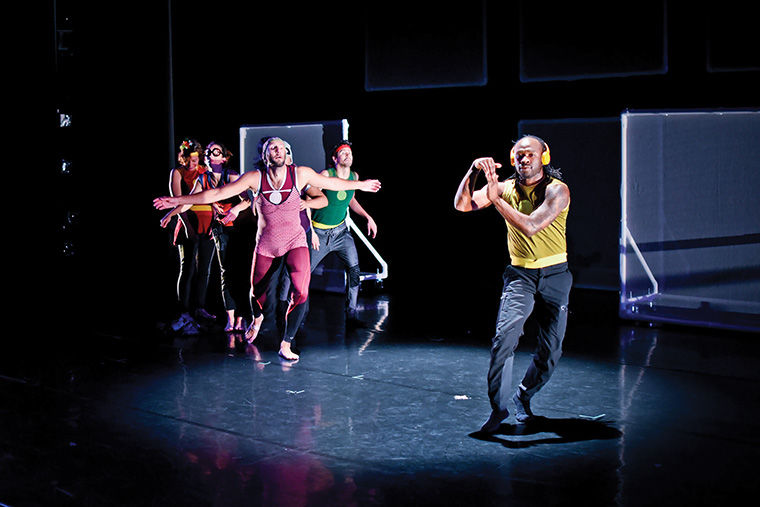Power-packed ensemble to perform at Dance Center
“Trip the Light Fantastic: The Making of SuperStrip,” Columbia’s Dance Center’s upcoming show, is the most visually technical work Chicago-based Lucky Plush Productions has ever done, according to ensemble member Meghann Wilkinson.
September 26, 2016
A multimedia dance production about over-the-hill superheroes creating a “think tank for do-gooders” will be featured at Columbia’s Dance Center Sept. 29–Oct. 1.
Chicago-based dance and theater company Lucky Plush Productions created “Trip the Light Fantastic: The Making of SuperStrip,” which premiered at Chicago’s Harris Theatre on March 3. After attending the premiere, Bonnie Brooks, associate professor in the Dance Department and director of The Dance Center, 1306 S. Michigan Ave., invited the company to perform its show at the college.
“I felt [“SuperStrip”] was a really fantastic project to bring to our stage and make available to our immediate community,” Brooks said.
A discussion session for audience members and the ensemble will follow the first showing on Thursday night.
“[The work done by Lucky Plush], in a lot of ways, exemplifies what we are trying to do here at Columbia, in terms of the performing art, collaborative initiatives and cross disciplinary initiatives,” Brooks said.
Inspiration for the performance derives from graphic novels and comic books, according to Julia Rhoads, creator of “SuperStrip” and founder of Lucky Plush Productions. These elements not only inspire the superhero characters but also the displays used on the stage, she said.
One of the unique elements of visual art in the show is the use of “connect cameras,” according to Rhoads, referring to the cameras that capture cast members’ movements in real time and amplify those movements through projection to create the superpower effects.
“In our work, we’re using so many different vocabularies,” Rhoads said. “We use dance, dialogue, song and visual design. For me, it’s all about [servicing] the logic of the content of the show.”
Projectors are also used to illuminate movable walls on stage to emulate the appearance of comic strips, she said.
In the past, several Lucky Plush Production shows featured fewer visual elements, but “SuperStrip” was designed to be more picturesque because it is typically shown in large theaters, according to ensemble member Meghann Wilkinson.
Improvisation is another element that separates “SuperStrip” from other performances. Lucky Plush’s productions often express a feeling of spontaneity that allows viewers to understand members of the ensemble as individuals, Rhoads said.
“We are allowed to have a human experience on the stage, so some of our speaking is off the cuff,” Wilkinson said. “If something happens, we are encouraged to name that aloud or interact with it.”
The Dance Center, which seats 268, will be one of the smaller venues in which “SuperStrip” is performed, but the intimate space offers the opportunity for students to be close to the video work, she said.
“I always like it when I can see people in the audience,” Wilkinson said. “A space like the Dance Center is amazing to perform in because, the way the seating is in relation to the stage, you have an intimate feel between the audience and the performers.”








